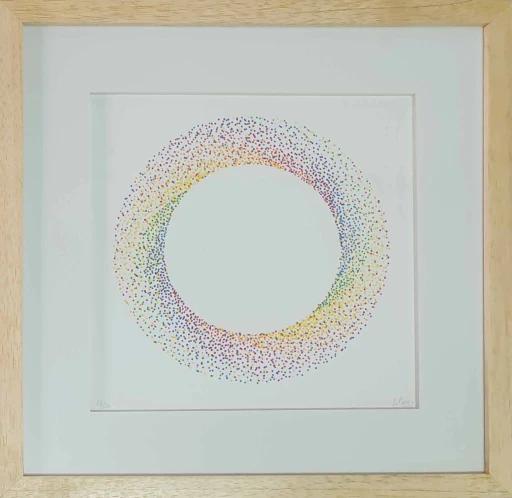Julio Le Parc
Julio Le Parc (b. 1928, Mendoza, Argentina) lives and works in Paris, France. Le Parc attended the Escuela de Bellas Artes in Buenos Aires in 1943 where he initially became interested in Arte Concreto-Invencion and the Spaziliasm movement. In 1958, Le Parc went to Paris on a French government scholarship and settled there working on artworks related to research into the three dimensions, movement and light, referring to the kinetic arts. Victor Vasarely's exhibition in Buenos Aires in 1958 became an important catalyst for his career, while in Paris Le Parc continued collaborative work with fellow friends of Vasarely and studied the writings of Mondrian, evolving to reflect on the tradition of Constructivism.
Le Parc represented Argentina at the Venice Biennale in 1966, winning the International Grand Prize for Painting as a solo artist. Le Parc began working on two-dimensional compositions in colour and black and white as early as 1953, while he was still an art teacher in Buenos Aires.
From 1960, however, he began to develop a series of distinctive works that used "milky" light: these objects, usually constructed with a lateral source of white light that was reflected and broken up by polished metal surfaces, combined a high degree of intensity with a subtle expression of continuous movement.
Le Parc's works have been the subject of numerous solo exhibitions in Europe and Latin America, including Instituto di Tella (Buenos Aires), Museo de Arte Moderno (Caracas), Palacio de Bellas Artes (Mexico), Casa de las Americas (Havana), Moderna Museet (Stockholm), Daros (Zurich), Städtische Kunsthalle (Düsseldorf). Le Parc's works were also included in several group exhibitions and biennials, including MoMA's controversial exhibition The Responsive Eye (1965), the Venice Biennale in 1966 (where he received the Prize) and the São Paulo Biennale (1967). As an act of protest against the repressive military regime in Brazil, he joined artists in boycotting the São Paulo Biennale in 1969 and published an alternative catalogue Contrabienal in 1971. Le Parc's later collective works include participation in anti-fascist movements in Chile, El Salvador and Nicaragua. He has recently been the subject of major retrospectives, including Julio Le Parc (Serpentine Gallery, London, UK, 2014); Soleil froid (Palais de Tokyo, Paris, France); Le Parc lumière (Casa Daros, Rio de Janeiro, Brazil, 2013; MALBA, Buenos Aires, Argentina, 2014); A constant search (Galeria Nara Roesler, São Paulo, Brazil, 2013); and the group exhibition Dynamo (Grand Palais, Paris, France, 2013).
Artworks of this Artist
Procurando a obra que mais combina com você?
Converse com nossa equipe para uma consultoria exclusíva com obras de sua preferência.
Fale Conosco

